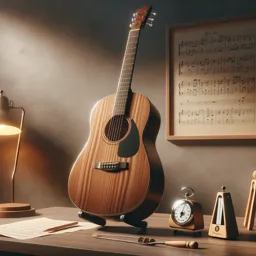Introduction
The classical guitar is a timeless instrument, celebrated for its rich tone and expressive range. If you are captivated by its sound but unsure how to begin, this guide will walk you through each stage of your journey, helping you build confidence and skill from your very first note.
Choosing Your Classical Guitar
A great musical journey begins with the right instrument. Beginners should choose a classical guitar with nylon strings, which are softer on the fingers and produce the warm, mellow sound characteristic of the style. Visit a local music store or consult trusted online reviews to find a beginner-friendly model that fits your budget.
Understanding Guitar Anatomy
Knowing your instrument’s parts will help you follow lessons and care for it properly. Key terms include:
- Body – The large, hollow section that amplifies the sound.
- Neck – The long section where you press the strings to produce notes.
- Fretboard – The front of the neck, marked by metal frets.
- Sound Hole – The opening that projects the sound.
- Bridge and Saddle – The part where strings are anchored to the body.
Establishing Good Posture and Hand Position
Proper posture is crucial for technique and avoiding strain. Sit upright with the guitar resting on your left leg (for right-handed players) and the neck angled slightly upward. Keep your shoulders relaxed, your left-hand thumb behind the neck, and use your fingertips to press the strings. Your right hand should float naturally over the sound hole with slightly curved fingers.
Basic Chords and Simple Melodies
Begin with one-finger melodies on a single string to build control. Gradually add basic chords like E minor and A major. Focus on pressing strings cleanly and strumming gently using your thumb or fingers.
Essential Practice Habits
Consistent short practice sessions—about 15–20 minutes daily—are more effective than occasional long ones. Warm up with simple finger exercises, work on one new concept at a time, and be patient with your progress. In classical guitar, small consistent steps lead to big improvements.
Learning to Read Music
Reading basic sheet music is an important skill for classical guitarists. Start by learning the open string notes and basic rhythms. Beginner method books and online courses tailored to classical guitar are excellent resources for developing this skill.
Exploring Repertoire and Resources
Once you are comfortable with basic notes and chords, try beginner-friendly pieces like Ode to Joy or simple folk tunes. Join online communities, watch instructional videos, or attend group classes to stay motivated and inspired.
Conclusion
Your journey with the classical guitar opens a world of musical possibilities. Approach learning with curiosity, commit to steady practice, and enjoy each step toward making beautiful music.

























